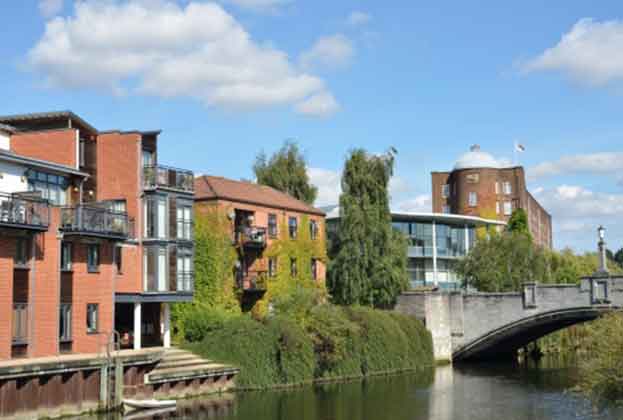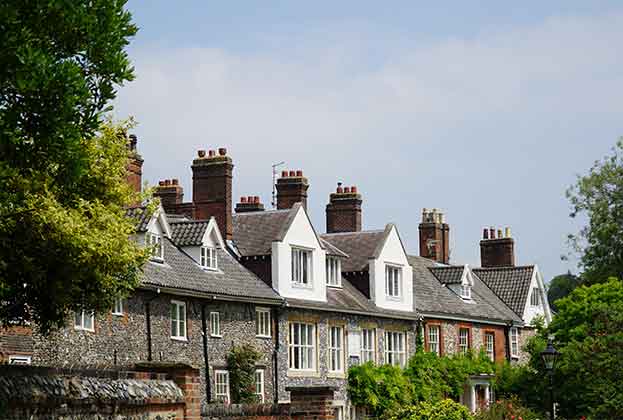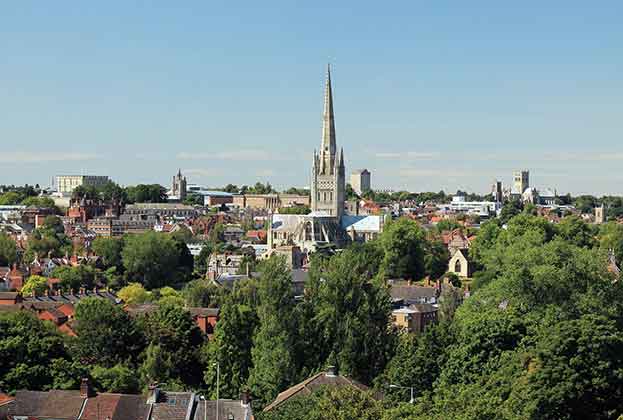Norfolk has fewer land constraints than much of the wider south east, but improving connectivity will be the key to unlocking the housing to support growth
Meeting housing need
Based on current local plans, Norfolk has a total estimated annual housing need of 4,142 homes. Housebuilding across the county has been strong, with 3,699 new homes delivered in 2017–18. The level of delivery has been trending upwards with annual supply increasing between 2012 and 2017, from 0.5% of stock, up to 0.9% of stock. This has plateaued recently, with a negligible increase between 2017 and 2018, a trend that is in line with national levels of housing delivery.
This relatively healthy level of supply has managed to meet 89% of need. But the picture is mixed across the county. Delivery has been strongest in South Norfolk, meeting 130% of need. The largest deficit of delivery is in Great Yarmouth, with a shortfall of 268 new homes per year.
Delivering on planning
The county is delivering this level of housing despite patchy local plan coverage. To meet the county’s need, a joined-up approach to planning is required. Four of the local authorities in the country have a post NPPF plan in place, but the three others, North Norfolk, Breckland and King’s Lynn and West Norfolk are lagging behind. Breckland is currently at public examination, with the draft plan now being modified. A key challenge for the local authority has been identifying enough land to meet housing need. It currently has a published housing land supply of only 4.7 years. North Norfolk has produced a draft local plan, and is aiming to adopt it by the end of 2020. King’s Lynn and West Norfolk is the furthest behind in the process, currently still in initial preparations for a new plan.
Land supply is a consistent challenge across the county, despite not having the constraint of green belt designations. Two local authorities have a published land supply of less than five years. This suggests Norfolk will struggle to meet its housing need in the coming years, although it does also mean there are opportunities for developers to bring forward sites beyond the local plan process if suitable land can be identified.
There will also be opportunities to bring sites forward as the four local authorities with plans in place are now due for review. Great Yarmouth is currently preparing an update to its 2015 plan with new policies and site allocations. It is expected to be adopted in late 2020. Norwich, Broadland and South Norfolk is also reviewing their joint local plan; although publication of the new draft plan has been delayed. A key issue is how much development should be focused on Norwich itself, and how far Broadland and South Norfolk are able to accommodate overspill need.
At present Norwich is only meeting 50% of its housing need, but has been supported by Broadland and South Norfolk, both building at a rate well in excess of their own need.
Unlocking future development
The key to identifying enough land for housing will be the delivery of new infrastructure to unlock sites. Norfolk has recently benefitted from the new Broadland Northway, which runs from A1067 to Postwick. This reduces congestion to the north of Norwich, and will support several major growth locations, including the proposed settlement at Rackheath, and the Beeston Park urban extension. The County Council has announced its intention to extend the road further to the west of Norwich, to create the full ring road, providing scope to unlock more land.
The other major road upgrade was the A11, leading to Cambridge, which was widened in 2014. This has strengthened the link between the cities, and the corridor between them is likely to be a hotspot for development for both residential and commercial uses, including logistics and distribution.
Major development is already emerging along this corridor at Thetford. The Kingsfleet urban extension, with capacity for up to 5,000 new homes, is the largest residential scheme in the county. 18 hectares of land has been allocated at Thetford Enterprise Park for commercial development, as part of the wider A11 Tech Corridor project. It has been projected that there is capacity along the corridor to deliver an additional 26,000 jobs by 2031.
Further bolstering this connection is the potential of the proposed East-West rail link from Oxford to Cambridge extending further to Norwich. This would potentially give the city easier access to Cambridge, and provide a link to the high-value tech cluster, further boosting the agri-tech sector in Norfolk. This new line has yet to be confirmed, but the East West Rail Consortium are keen to pursue this link.
Read the articles within Norfolk and Norwich: Adapting for change below.
.jpg)



